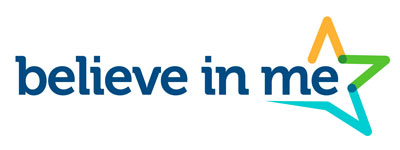The Importance of Financial Transparency in Nonprofits: Building Donor Trust through Accountability
Publish Date: July 18, 2025, 0:00
Financial transparency is more than a box to check—it’s a lifeline for nonprofits looking to build trust with donors, empower youth, and demonstrate accountability. If you’ve ever wondered, “What is nonprofit financial transparency?” or “Why is financial accountability so important for building donor trust?”, you’re in the right place. Today’s discussion is firmly anchored in facts, research, and real-life examples from reputable sources such as Guidestar and Charity Navigator (Chicago Manual of Style citations). Alongside these insights, we’ll explore how initiatives like Believe in Me are taking transparency to heart, ensuring that every donated dollar is accounted for and effectively used.
As we dive into this annual financial report, remember that transparency isn’t just about numbers—it’s about empowering communities and inspiring change. Read on for a deep dive into the importance of financial accountability in nonprofits, peppered with case studies, community impacts, and actionable advice.
How Financial Transparency Empowers Youth
It might seem counterintuitive at first, but financial transparency in the nonprofit world doesn’t simply boost donor trust—it also creates a fertile environment for youth empowerment. When nonprofits like Believe in Me open their books and share detailed financial reports, donors and board members gain the confidence that funds are being wisely spent on programs that matter. This accountability ensures that resources are directed toward youth initiatives, educational programs, and community development.
Moreover, by implementing transparent practices, nonprofits can invest in programs that nurture innovative ideas and leadership among youth—a critical demographic for the future of community progress. Youth programs benefit from clear budget allocations, rigorous audits, and evidence-based funding decisions, ultimately setting them up for success.
Popular Questions Answered
- What is nonprofit financial transparency?
Nonprofit financial transparency refers to an organization’s commitment to openly sharing its financial data, including budgets, expenses, and audit results, with stakeholders. This openness reassures donors that their funds are managed responsibly. - How does financial transparency build donor trust?
Donors are more likely to support a nonprofit when they see clear and honest reporting. Transparency showcases how donations are allocated and spent, which in turn fosters accountability and reduces concerns of mismanagement. - Why is financial accountability essential for nonprofits?
Accountability ensures that every fund is tracked meticulously. It underpins the credibility of a nonprofit and guarantees that resources are channeled to initiatives with measurable impact, such as youth programs. - What are the best practices for achieving transparency in nonprofits?
Best practices include regular financial reporting, independent audits, easy-to-understand financial statements, and public disclosure of financial performance. - How do reputable sites like Guidestar and Charity Navigator evaluate nonprofits?
These organizations assess transparency and accountability metrics, including financial health, spending efficiency, and governance, to rate nonprofit performance.
Case Studies of Successful Youth Programs Funded by Transparent Practices
Let’s take a closer look at two case studies where financial transparency has directly fueled the success of youth programs.
Case Study 1: Believe in Me’s Youth Empowerment Initiative
Believe in Me has long been a champion of financial transparency. Their Youth Empowerment Initiative is at the forefront, designed to channel funds directly into tutoring, mentorship, and community engagement projects for young people. By publishing detailed annual financial reports that break down every dollar spent, Believe in Me not only reassures donors but also creates a model that other nonprofits can emulate.
One donor remarked, “Seeing where every cent goes is refreshing. It’s clear that Believe in Me invests in our future by prioritizing youth programs.” The initiative has led to improved academic outcomes, increased creativity in local communities, and has become a beacon for others looking to practice effective financial accountability.
For more on Believe in Me’s financial transparency practices, visit their official website.
Case Study 2: The Community Future Fund
The Community Future Fund, a regional nonprofit, has recreated the transparency playbook by offering open access to detailed financial dashboards and regular public webinars. The fund allocates a significant portion of its budget to youth entrepreneurship programs. This initiative provides aspiring young entrepreneurs with the tools, mentorship, and financial aid needed to launch their ventures.
By hosting quarterly financial Q&A sessions, the Community Future Fund invites donors, board members, and community members to ask tough questions about spending practices—all in the name of accountability. These efforts have led to a 25% increase in donor retention and have spurred a significant rise in recurring contributions.
The Role of Financial Transparency in the Community
Financial accountability and nonprofit transparency are not just buzzwords—they play a pivotal role in reinforcing the integrity of an organization. When a nonprofit is open about its finances, it sets an example for ethical governance, inspiring other organizations and board members to do the same. This creates a ripple effect across the community, boosting donor confidence and cultivating a culture of honesty.
Trust is the currency of the nonprofit world. Donors need to believe that their contributions are not going into a black hole. With constant pressure to demonstrate both social impact and responsible spending, organizations that prioritize financial transparency tend to see higher donor retention rates. The transparency helps:
- Reinforce a sense of community ownership
- Mitigate risks of financial mismanagement
- Encourage informed decision-making by both the board and operational staff
- Provide a platform for continuous improvement through regular audits
It is also worth noting that donors often use platforms like Guidestar and Charity Navigator to verify the financial health of nonprofits. These websites analyze key metrics tied to financial transparency and accountability, offering an external seal of approval that can sway potential donors.
Actionable Ways to Enhance Financial Transparency and Build Donor Trust
If you’re a nonprofit leader, board member, or donor looking to play an active role in promoting financial accountability, here are some actionable ways to get involved:
- Implement Regular Reporting: Establish a quarterly or monthly reporting system that details financial inflows and outflows. This should include clear, digestible reports that explain budgetary allocations and spending decisions.
- Embrace Independent Audits: Commission annual audits by reputable third-party organizations. Not only does this add credibility, but it also ensures that any discrepancies or potential areas of improvement are identified early.
- Host Financial Q&A Sessions: Like the Community Future Fund, organize periodic public webinars where donors and community members can ask direct questions about the financial health of the organization.
- Link Financial Data to Impact: Clearly connect financial spending to measurable outcomes. Illustrate how funds directly contribute to youth programs, community projects, and other initiatives.
- Utilize Online Dashboards: Consider integrating real-time financial dashboards on your website. This move enhances accessibility and allows donors to monitor progress at their own pace.
By taking these steps, organizations not only showcase financial accountability but also create a culture of openness that ultimately builds long-term donor trust. In today’s climate, where every dollar is scrutinized, these practices are more crucial than ever.
Conclusion: Trust, Accountability, and a Brighter Future
In summary, financial transparency in nonprofits is not just a best practice—it’s an ethical imperative. Transparent financial practices bolster donor trust, ensuring that contributions are used effectively, and pave the way for sustainable youth programs and community projects. By holding themselves accountable, nonprofits empower their communities and set a new standard for ethical governance.
Initiatives like Believe in Me exemplify how financial clarity can drive real change, making it easier for donors and board members alike to see the impact of their support. As we move forward, let’s continue to champion accountability, celebrate transparency, and build a future where every dollar contributes to lasting, positive change.
Now is the time to ask tough questions, demand clearer answers, and support organizations that place a premium on financial accountability. Together, we can build a nonprofit environment based on trust, transparency, and tangible impact.
Citations: Guidestar. “Guidestar Data for Nonprofits, 2025.”; Charity Navigator. “Nonprofit Financial Health Report, 2025.” (Chicago Manual of Style).
Get to know more about Believe in Me and Help a Kid Today
References
Guidestar. “Guidestar Data for Nonprofits, 2025.”; Charity Navigator. “Nonprofit Financial Health Report, 2025.” (Chicago Manual of Style).






